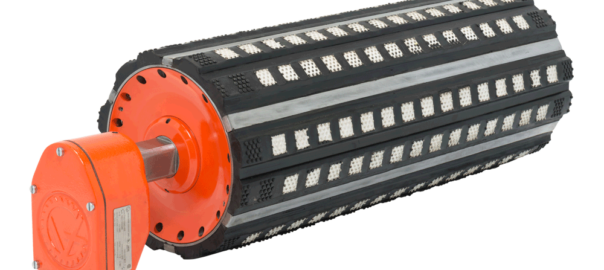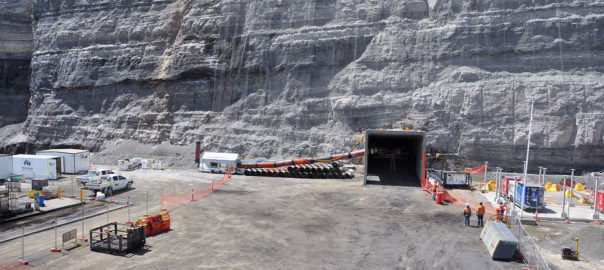An alternative method of steeping the open-pit benchface at Barrick Gold’s Goldstrike mine in Nevada, US, has shown significant net benefits through a reduction in mined waste tonnes and an increase in gold reserves, according to a paper to be presented at the SME Annual Conference & Expo on Monday.
The paper, Steepening Of Inter-ramp Slopes On A Final Wall At The Goldstrike Open Pit, will be presented by Barrick Nevada’s Chief Geotechnical Engineer, Jeff Mattern.
Located on the Carlin Trend gold belt in north-eastern Nevada, the mine has produced over 43 Moz of gold during the past 30 years. Mining at the Goldstrike open pit has seen its share of slope instabilities, according to Mattern. “In areas where slopes have remained stable, consideration has been made for potential slope steepening of final walls,” he said.
Looking to potentially employ steeper slopes for significant economic benefits, Barrick has taken the commonly used Modified Ritchie Criteria for catch bench width and adjusted it, “resulting in quantified, rock-specific formulas for bench width and rock fall berm placement”, Mattern said.
“The result is an interramp slope angle increase of 2° on a 300 m high slope, without the necessary purchases and procedural changes that would be required for pre-split drilling and blasting,” Mattern said. This occurs in Vinini, Rodeo Creek and Popovich rocks with benches 12 m in height.
The employment of this method has shown “significant” net benefits through a reduction in mined waste tonnes and an increase in gold reserves, he added. In fact, this exercise in a single layback, saw waste stripping decrease by around 9 Mt, while 35,000 oz of gold has been added to mine reserves.
Mattern concluded: “Ongoing monitoring of slope performance, slope design compliance, optimisation of operational practices, and collection of detailed geologic data can all help to provide the right information for potentially steeper slopes and significant economic benefit.”









